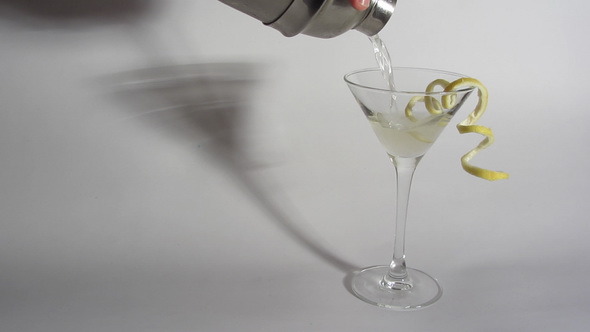The Martini is quite possibly the most easily recognized cocktail. It is so popular in fact, that it shares a name with the glass it is served in. The martini’s history is similar to that of other cocktails; confusing and widely disputed. There is one thing that most bartenders can all agree on though, and it is that “-tini” is an unfortunate suffix appended to any number of questionable concoctions (think apple-tini or cran-tini). There is one drink called the Martini, and one only.
[related_content slugs=”write-drunk-edit-sober-the-manhattan,write-drunk-edit-sober-the-sazerac” description=”More Write drunk; edit sober” position=”right”]
The first martinis were served in the early 1800s in California and were likely named for Martinez, a town near San Francisco. Then, martinis were made with sweet vermouth – not dry – and were always made with gin, which was readily available during prohibition. The drink was garnished with a lemon peel, not an olive.
By 1906 it is believed that dry vermouth became the standard as the American palate changed, moving away from sweeter drinks. A dash of orange bitters was commonly added to the drink as well. By the 1950s, bitters disappeared from the drink and the quantity of vermouth trickled down from a healthy pour to just a splash or rinse. Sweeter gins like Old Tom gin were also used in place of the London dry gins and vodkas that are currently popular.
Today, there are a number of ways the martini is drunk. Either gin or vodka is chosen, then sweet, dry, perfect or dirty, depending on the vermouth. It is commonly garnished with either an olive or a lemon twist. If no specification is made the drink should be made with 5 parts gin and 1 part dry vermouth.
The general rule for cocktails based entirely of spirits is that they are always stirred. The martini is an exception to this rule. It is commonly believed that James Bond is to blame for this change, as well as the switch from gin to vodka. The famously cheeky spy ordered his martini “shaken, not stirred,” probably to challenge the status quo. Shaking incorporates more air and water into the drink as the ice cubes are broken up. When poured, a shaken drink should be frothy and have tiny ice crystals form around the edges of the glass.
Cheers,
Martini Cocktail
2 oz gin
1/3 oz plus a dash dry vermouth
1 dash orange bitters
Garnish: lemon twist
Combine the gin, vermouth, and bitters in a mixing glass filled with ice. Stir until chilled and strain into a chilled cocktail glass. Garnish with the lemon twist.
Note: for dirty Martinis add 1/3 oz plus a dash of olive brine, for perfect Martinis, use equal parts sweet and dry vermouth and for sweet martinis replace the dry vermouth with sweet vermouth.
